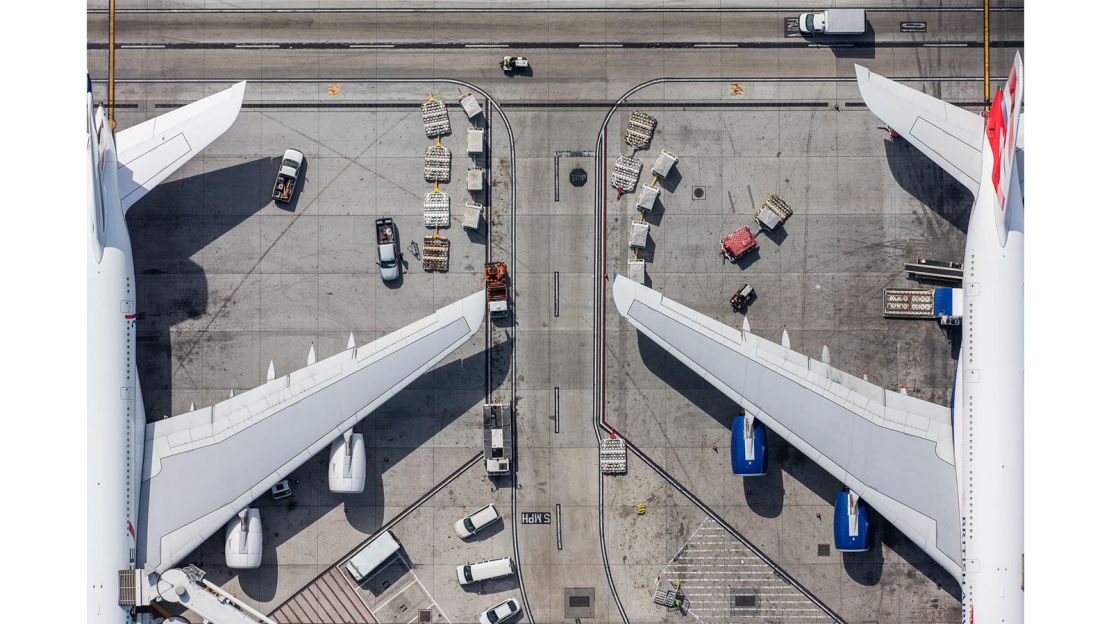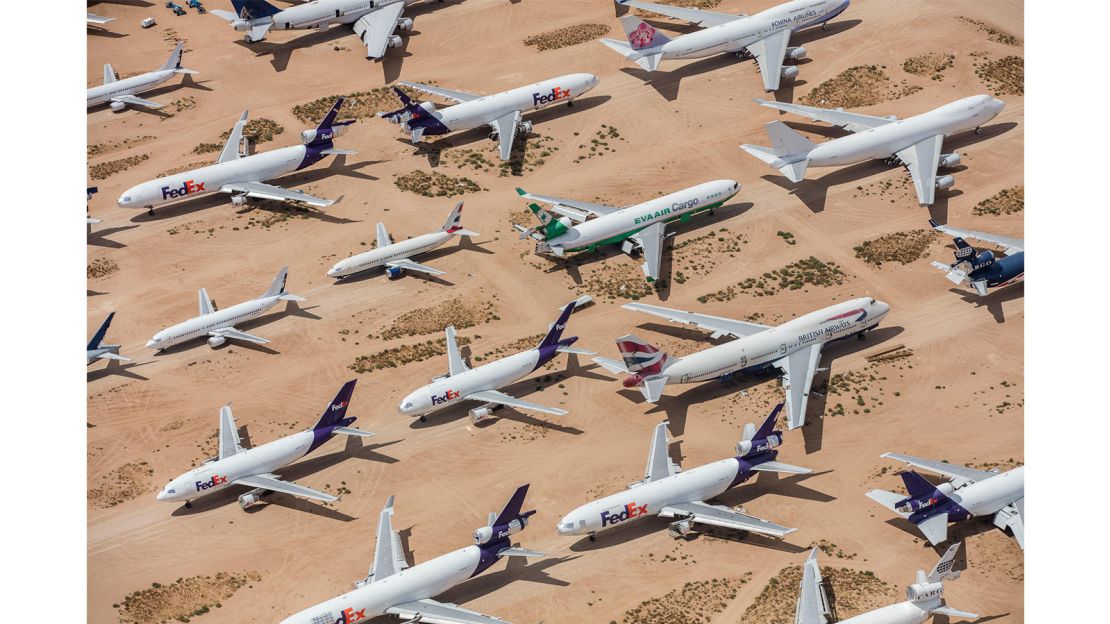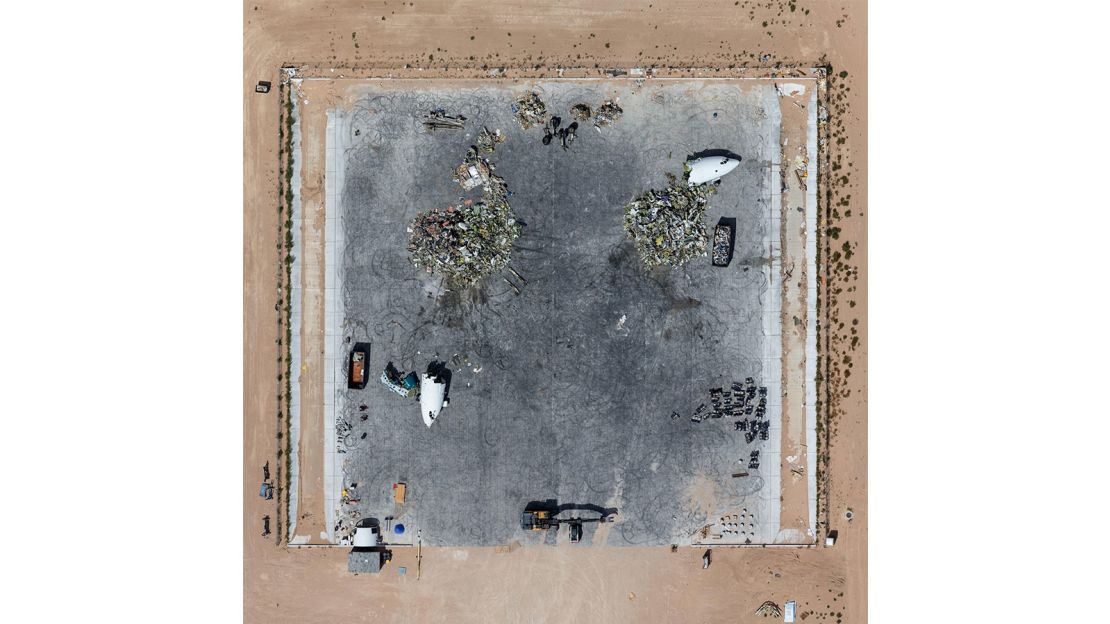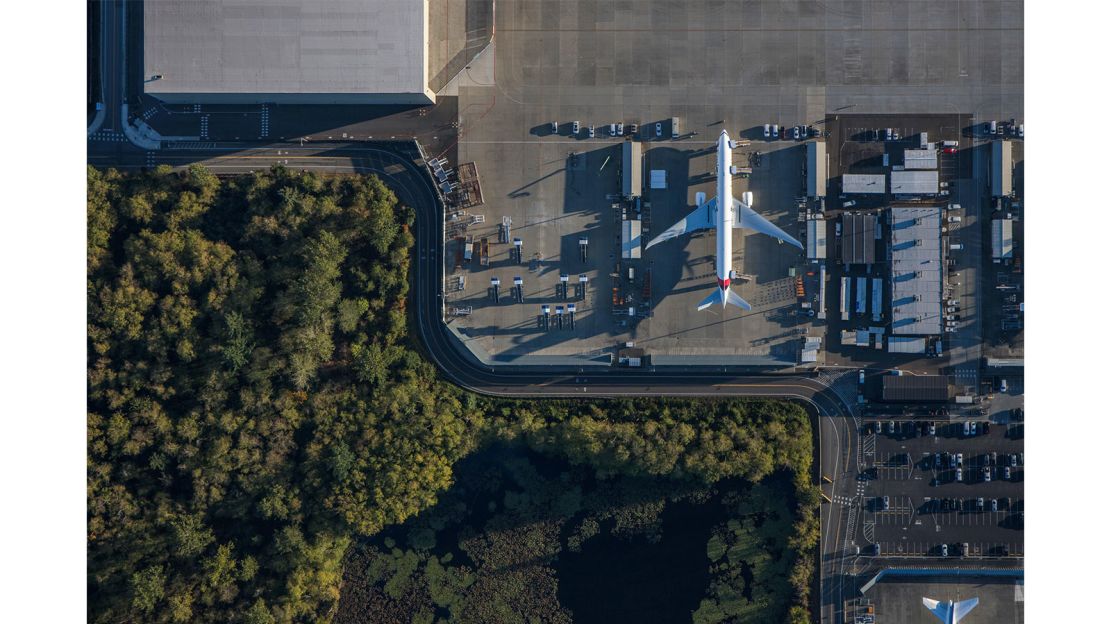We’re all familiar with the sight of an airplane soaring through the sky, but what do these flying machines look like when they’re being assembled?
And what about when they’re nearing the end of their life, about to be demolished and dismantled for scrap?
Intrigued? Mike Kelley was too. The aerial photographer rented a helicopter and snapped a series of shots tracking aircraft’s life span – from construction at Boeing Field to dismembering in a Californian desert.
These striking images form the basis of his latest photo series, “Life Cycles.”
“The thing that appealed most to me was reversing our perception of looking at airplanes,” Kelley tells CNN Travel.
Reversing perceptions

The project began when Kelley had the opportunity to take some photographs above Los Angeles International Airport, or LAX. The aviation enthusiast was fascinated to witness a side of the transport hub regular passengers don’t usually see.
“If you look at it from above, down on it, from the ground up, you see this incredibly interesting infrastructure and all these processes that you take for granted,” says Kelley.

A couple of hours spent above LAX allowed Kelley to create eye-catching images that reveal a surprising symmetry and aesthetic appeal in the brightly colored planes dotted around the industrial terminal buildings.
Kelley took the photographs from inside a rented helicopter – door off – hovering over the bustling airport below.
This insider access allowed for some incredible angles.
“You can fly over the runways where the planes [are] landing but they’re also taking off, and there’s a gap where you can fly,” he explains.
Complete story arc

The exhilarating experience at LAX sparked the idea for “Life Cycles.” Kelley decided to photograph planes in other stages of their life span.
“It didn’t start out as that life cycle idea, but it sort of evolved into that once I saw how cool or how interesting the first series was from flying over LAX,” he says.

The idea of documenting a plane from conception to destruction had an appealing symmetry to it.
“You have a whole story arc for the whole thing,” explains Kelley.
Intrigued to see planes in their final stages of existence, the photographer chartered a helicopter and headed out to airplane bone yards out in deserts of California.
Kelley didn’t know what to expect, he recalls – and he was conscious this expensive mission could heed disappointing results.

Upon arrival, he was struck by the unexpected patterns created by the retired planes.
“You think of a scrapyard as like this messy, junky place, but all these planes, there’s this amazing symmetry, and this repetition and pattern and rhythm to it all,” he says.
His eerie photographs show the condemned aircraft lined up and ready to be pulled to pieces. Other shots show the dusty remains of a dismembered aircraft.

In contrast, the images Kelley took of airplanes being created at the Boeing Field in Seattle are more frenzied, depicting a busy and bustling facility.
“They progressively got more symmetrical as the plane sort of got closer and closer to death, which is again the reverse of what you would think would happen,” he says.
No drone zone

Aerial photography is having a moment, thanks to the increasingly popularity of drone images.
But Kelley says his rented helicopter provided him with a unique angle unavailable to drone users – who are banned from hovering their contraptions above airports.
“I feel like it’s such a different experience, actually being in a helicopter with the door off, versus standing on the ground with a drone and pushing buttons on an iPad to get the right shot,” he says.

Kelley’s currently toying with taking the project outside of the United States. “I’d love to get to the more interesting places like Africa, where they’re flying old Soviet planes around and see what that looks like,” he says.
For now, he’s pondering his next series. It’s still uncertain but likely to involve airplanes.
“I’m totally obsessed with these airplane photographs, so I think it’s going to be another aviation-related project, but I haven’t quite nailed down an idea yet.”



















